Saffron crocus, or Crocus sativus, is a perennial flower that symbolizes love and its varied emotions, from sweet and innocent to intense and passionate. But what kind of love does the saffron crocus represent? In today’s article, we will explore this very question.
1. What is the Saffron Crocus?
Saffron crocus, also known as saffron, is a perennial plant that belongs to the Iris family. The dried stigmas of the flower are called saffron, a highly prized spice worldwide. Thus, the flower is also known as Saffron Crocus.
In terms of morphology, the saffron crocus plant grows to a height of 20-30 cm, with straight, thin leaves approximately 1-3 mm in diameter. The flowers typically bloom in October and emit a fragrance similar to honey.
 Saffron Crocus
Saffron Crocus
The predominant color of the flower is a shade of lilac or mauve. Each flower has three deep red stigmas. The corm, or underground stem, of the saffron crocus is pseudobulbous, brown in color, small, and solid.
While its exact origin is unknown, the saffron crocus was first cultivated in Greece. It then spread across the Eurasian continent and was introduced to North America, North Africa, and Oceania.
The stigmas of the saffron crocus, or saffron, are highly valued not only for their health benefits but also because of the difficulty in harvesting them. Each flower yields only three stigmas. After drying, the stigmas shrink to a third of their fresh weight. Consequently, it takes approximately 200,000 flowers to produce one kilogram of saffron.
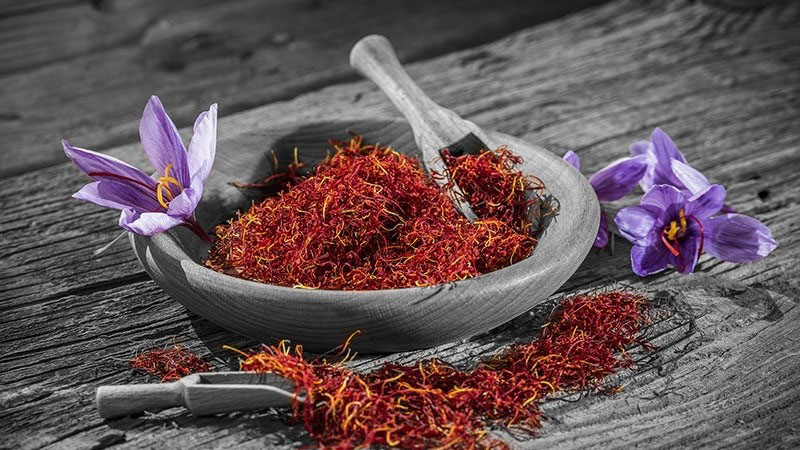 Dried stigmas of the saffron crocus – Saffron
Dried stigmas of the saffron crocus – Saffron
Today, the saffron crocus is predominantly cultivated in West Asia, with Iran being the largest and most renowned producer, accounting for nearly 90% of the world’s saffron supply.
The saffron crocus comes in various cultivars, each producing stigmas with distinct flavors and appearances. Some well-known commercial varieties include “Spain Superior” from Spain, “Pennsylvania” from the Netherlands, and “Aquilla” from Italy.
2. Benefits of the Saffron Crocus
The dried stigmas of the saffron crocus are its most valuable part, offering a plethora of health and beauty benefits. Scientific studies have shown that saffron stigmas contain various active compounds that promote health and prevent diseases.
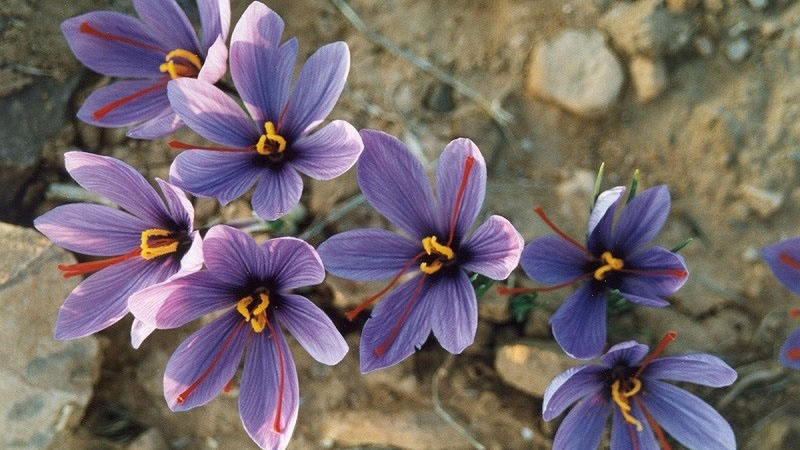 Using saffron stigmas to boost health
Using saffron stigmas to boost health
Improves Sleep: The compound Safranal, found in saffron stigmas, helps alleviate headaches caused by insomnia, reduces stress, and stabilizes mood, thereby promoting better sleep.
Enhances Memory: According to a study published in the journal Phytotherapy Research, saffron stigmas contain Crocin and Crocetin, which enhance brain function, improve memory, and aid in the treatment of Alzheimer’s and Parkinson’s diseases.
Aids Digestion: Saffron stigmas have anti-inflammatory properties and help treat stomach ulcers, reduce bloating, and relieve constipation.
Prevents Cardiovascular Diseases: The compounds Crocetti and Riboflavin help balance cholesterol levels in the blood, improve blood circulation, and prevent atherosclerosis.
Fights Cancer: According to the Journal of Traditional & Complementary Medicine, the antioxidants present in saffron stigmas boost the body’s immune system and protect against cancerous cells.
Saffron stigmas offer additional benefits, including alleviating depression, improving vision, and easing premenstrual syndrome symptoms.
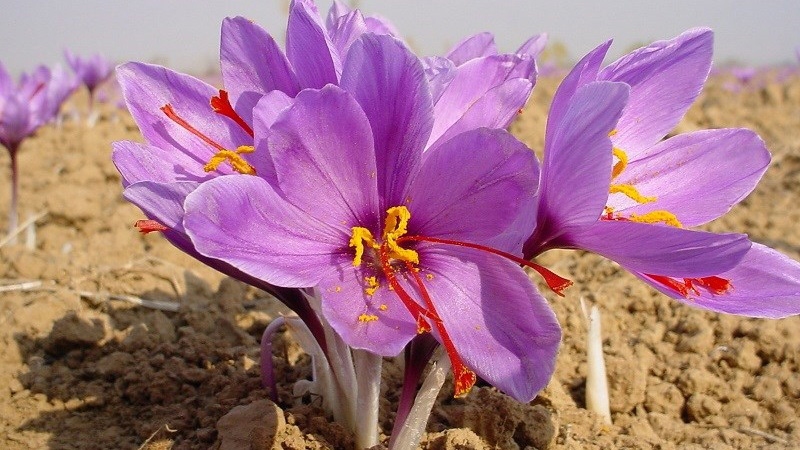 Saffron stigmas as a beauty elixir
Saffron stigmas as a beauty elixir
In addition to their remarkable health benefits, saffron stigmas are also a prized cosmetic ingredient for skincare and beauty enhancement due to their high content of vitamins, including vitamin C, vitamin A, vitamin B group, and minerals such as iron, potassium, and manganese. Here are some of their beauty benefits:
– Detoxifies the skin, improves elasticity, brightens and fades dark spots, controls acne and oil production, and fights aging, resulting in a smooth and youthful complexion.
– Reduces inflammation and treats skin conditions such as psoriasis and eczema.
– Stimulates fat burning, suppresses appetite, and aids in weight loss.
– Nourishes and softens hair, prevents hair loss, and promotes hair growth.
3. Symbolism of the Saffron Crocus
Symbol of the Saffron Crocus
Symbol of the Kingdom of Arendelle in “Frozen”
“Frozen,” a Disney animated film released in 2013, continues to captivate audiences worldwide. In the movie, the saffron crocus is the symbol of the Kingdom of Arendelle, stylized and featured prominently in flags, jewelry, clothing, and interior design.
 Saffron crocus motif on the royal seal, scepter, and attire of Arendelle
Saffron crocus motif on the royal seal, scepter, and attire of Arendelle
Notably, the saffron crocus also adorns prestigious items such as the royal scepter and seal, as well as the attire and jewelry of the royal family and nobility. Purple and teal, the two primary colors of the saffron crocus, are also characteristic of Arendelle’s culture.
Thus, the saffron crocus represents elegance, nobility, sophistication, and prestige.
Symbol of Love
Have you heard the legend of the saffron crocus? It tells the tale of a noble named Crocus who fell in love with a shepherdess named Smilax. However, their love was forbidden due to their differing social statuses. Heartbroken, Crocus and Smilax took their own lives.
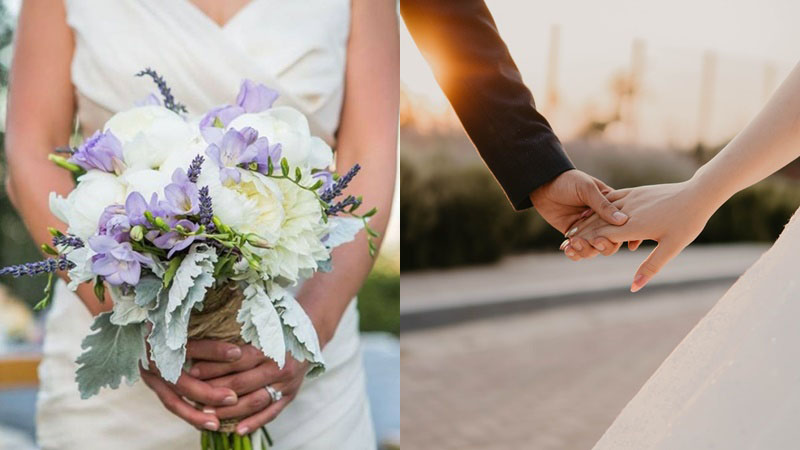 Saffron crocus symbolizes enduring love and is often used in weddings
Saffron crocus symbolizes enduring love and is often used in weddings
Moved by their tragic love story, a Greek goddess transformed Crocus into a flower, known as the Crocus flower (another name for the saffron crocus), and Smilax into a vine that entwines the flower, forever uniting them.
As a result, the Crocus flower, or saffron crocus, became a symbol of enduring and faithful love, often used in wedding decorations. The purple color of the saffron crocus also signifies loyalty and sacrifice in love.
Symbol of Life and Joy
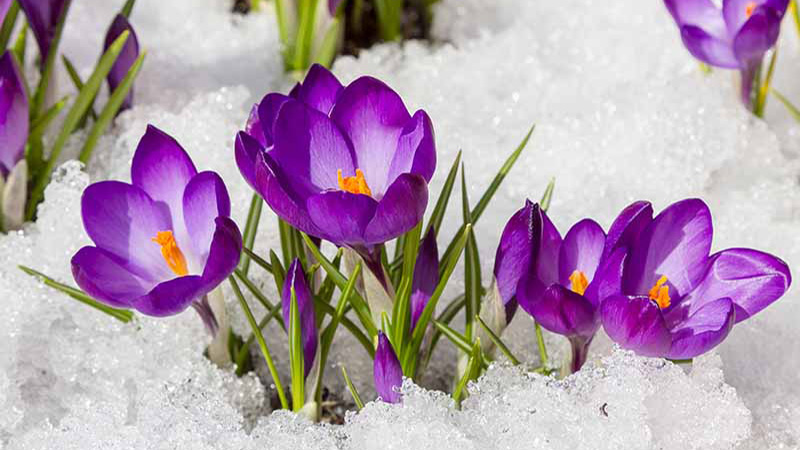 Saffron crocus blooms despite the freezing early spring weather
Saffron crocus blooms despite the freezing early spring weather
The saffron crocus blooms in early spring, showcasing its beauty and fragrance despite the cold weather. Hence, it is also a symbol of spring, vibrant life, renewal, joy, and the passionate pursuit of love and life for the ancient Greeks and Romans.
Meaning of Saffron Crocus Colors
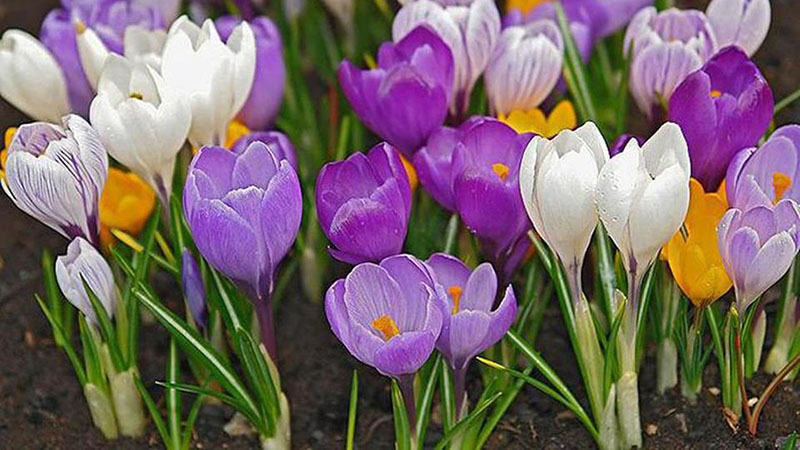 Saffron crocus comes in three colors: purple, white, and yellow
Saffron crocus comes in three colors: purple, white, and yellow
When we think of the saffron crocus, purple is the color that immediately comes to mind, and it is indeed the predominant color of this flower. However, saffron crocus also comes in white and yellow, each carrying distinct meanings.
Purple
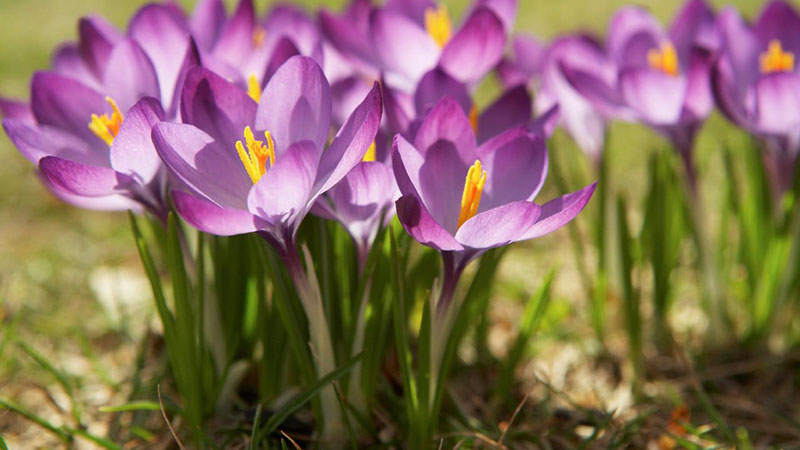 Purple saffron crocus
Purple saffron crocus
As mentioned earlier, purple saffron crocus symbolizes enduring and faithful love. It also represents nobility, elegance, and prestige. Additionally, it signifies pride, dignity, and success in life.
White
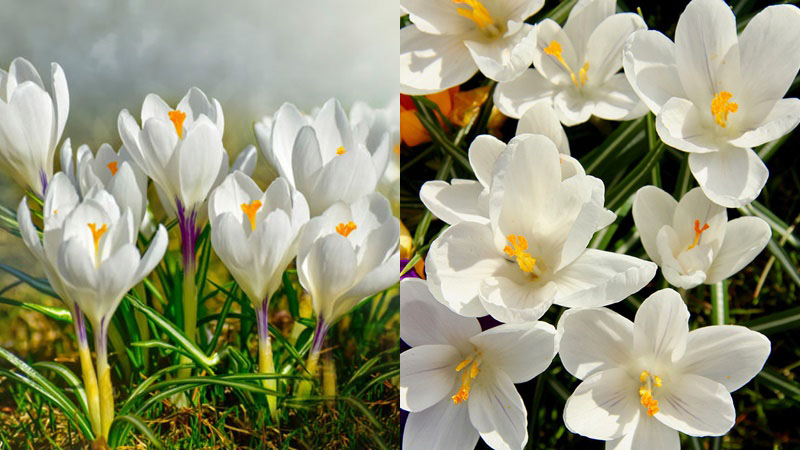 White saffron crocus
White saffron crocus
In contrast to the regal purple, white saffron crocus represents purity, innocence, fairness, and justice. Thus, combining white and purple in modern weddings symbolizes the union of these qualities.
Yellow
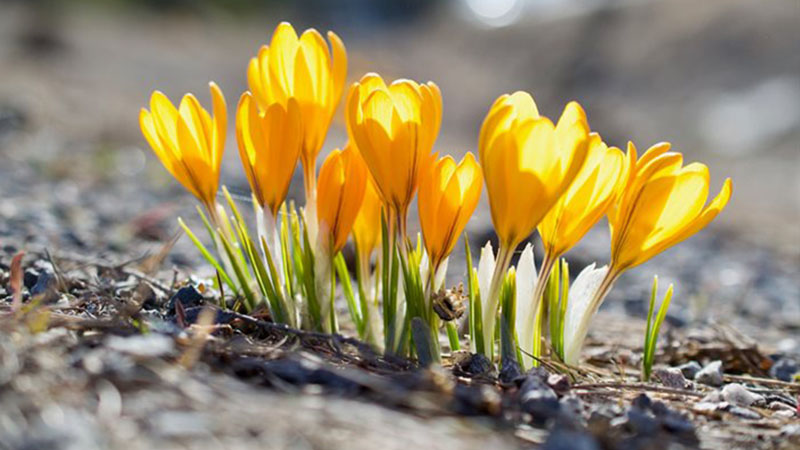 Yellow saffron crocus
Yellow saffron crocus
Yellow saffron crocus is quite unique compared to the other two colors. It symbolizes optimism, cheerfulness, and joy and is often given as a gift to loved ones, friends, and even romantic partners. The bright yellow color evokes a sense of warmth and happiness.
There you have it—the saffron crocus, a flower rich in symbolism and beauty. What are your thoughts on this exquisite and meaningful flower? Please share your impressions with us! Thank you for reading.






































